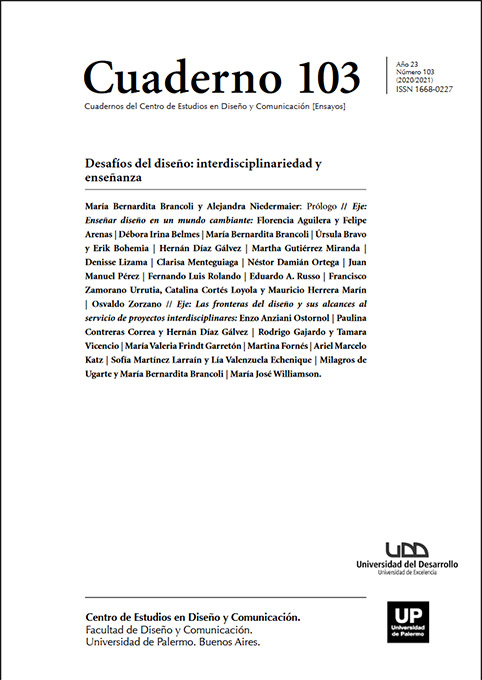A cien años de la Bauhaus: conexiones, ideales y materialización de un proyecto utópico
Abstract
In this article ideas will be desplayed as result of reflections on the Bauhaus made in design history courses in the last few years. Design as a discipline is relatively new, proper to the Modern context in wich it emerged after Indsutrial Revolution and in its short trayectory has allowed many people to improve their quality of life thanks to innovations that has been incorporated and to the massification of well-made objects. Although many see it as a vain profession, its origins allowed our subsistence and now, once basic needs are met, it has become a powerfull tool for social development.
References
Droste, M. (1991). Bauhaus: 1919-1933, Berlín: Taschen.
Févre, F. (1984). Modernidad y Posmodernidad en el arte, Buenos Aires: Fundación de arte Ana Torre.
Gombrich, E. (1997). Historia del Arte, Nueva York: Ediciones Phaidon
Kraube, A. C. (2005). Historia de la pintura, del renacimiento a nuestros días, México: Ullmann.
Marx, K. (2014). El capital, Madrid: Siglo XXI.
Meggs, P. (2012). Megg´s history of graphic design, New York: John Willey & Sons.
Salinas, O. (1992). Historia del diseño industrial, México: Editorial Trillas
Los autores/as que publiquen en esta revista ceden los derechos de autor y de publicación a "Cuadernos del Centro de Estudios de Diseño y Comunicación", Aceptando el registro de su trabajo bajo una licencia de atribución de Creative Commons, que permite a terceros utilizar lo publicado siempre que de el crédito pertinente a los autores y a esta revista.


